Author: Matt Del Fiacco
Reportedly one of the most widely used hop varieties in the United States at one point, Willamette has a well established history. Bred in 1976 by the USDA, it is a descendant of English Fuggle and reportedly exhibits some of the same earthy characteristics with expressive floral and spicy notes. It is also noted as being appropriate for a wide variety of styles, though many believe it tends to shine in English ales and American interpretations of English styles.
Alpha: 4.5 – 6.5%
Beta: 3 – 4.5%
Cohumulone: 28 – 32% of alpha acids
Total Oil: 0.6 – 1.6 mL/100g
Myrcene: 22 – 32%
Humulene: 31 – 35%
Caryophyllene: 12 – 14%
Farnesene: 7 – 10%
Linalool: 0.4 – 0.7%
Geraniol: 0.1 – 0.3%
ß-Pinene: 0.3 – 0.5%
Parentage: triploid seedling of English Fuggle
I’ve always been aware of Willamette but have never actually used it, despite the fact descriptions of it as being a mellow hop that imparts both earthy and floral notes sounds right up my alley. Given its historical popularity, I was excited to finally try it out for this edition of The Hop Chronicles!
| MAKING THE BEER |
With quite a few reports of Willamette being primarily floral and herbal, I decided to brew a Pale Ale with a grist consisting of only Pilsner malt in hopes of producing a clean, drinkable beer.
Where There’s a Willamette, There’s a Way Pale Ale
Recipe Details
| Batch Size | Boil Time | IBU | SRM | Est. OG | Est. FG | ABV |
|---|---|---|---|---|---|---|
| 5.5 gal | 60 min | 30.1 IBUs | 3.4 SRM | 1.049 | 1.012 | 4.8 % |
| Actuals | 1.049 | 1.012 | 4.8 % | |||
Fermentables
| Name | Amount | % |
|---|---|---|
| Pilsner (Weyermann) | 11.25 lbs | 100 |
Hops
| Name | Amount | Time | Use | Form | Alpha % |
|---|---|---|---|---|---|
| Willamette | 28 g | 60 min | Boil | Pellet | 3.6 |
| Willamette | 39 g | 25 min | Boil | Pellet | 3.6 |
| Willamette | 67 g | 5 min | Boil | Pellet | 3.6 |
| Willamette | 28 g | 3 days | Dry Hop | Pellet | 3.6 |
Yeast
| Name | Lab | Attenuation | Temperature |
|---|---|---|---|
| American Ale (1056) | Wyeast Labs | 75% | 60°F - 72°F |
Notes
| Water Profile: Ca 80 | Mg 2 | Na 10 | SO4 125 | Cl 62 |
Download
| Download this recipe's BeerXML file |
Coffee in hand, I began my brew day by heating RO water for a full-volume no sparge batch and measuring out my mineral additions.
I weighed out and milled the grain as the water was heating to strike temperature.
Once my intended strike temperature was reached, I added the grist filled Brew Bag to the water and gave it a gentle stir to ensure there were no dough-balls.
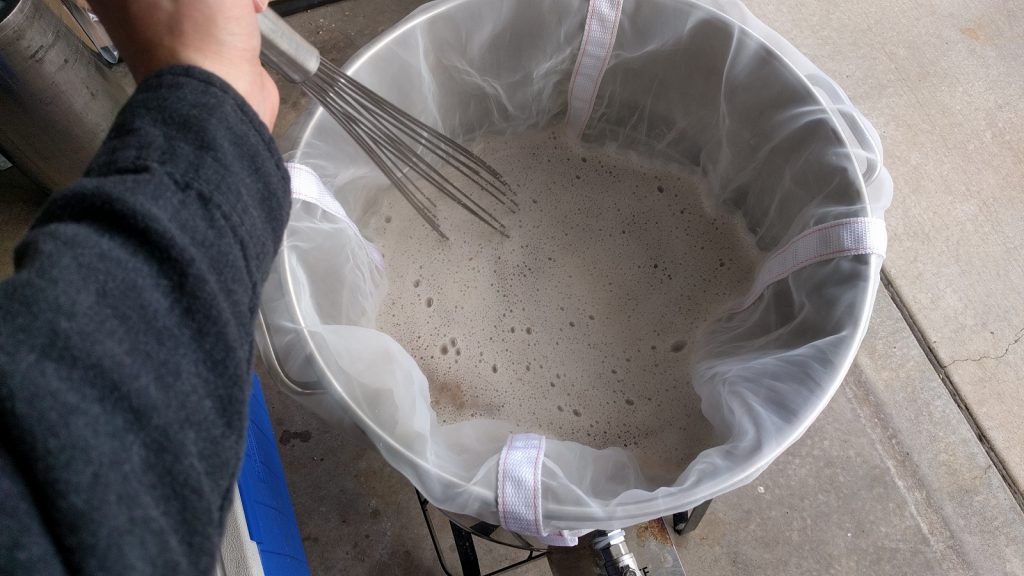
A quick check revealed I’d hit my target mash temperature of 153°F/67°C.
I turned on my pump to continuously recirculate the sweet wort and pulled a small sample for a pH measurement 15 minutes into the mash rest. I was happy to see I’d hit my target mash pH.
While the enzymes were doing their thing in the mash, I weighed out my kettle hop additions.
After the 60 minute mash was complete, I removed the bag of grains and started heating the wort to a boil.
The wort was boiled for 60 minutes with hops added at the times stated in the recipe, after which I quickly chilled it before measuring the OG with my refractometer.
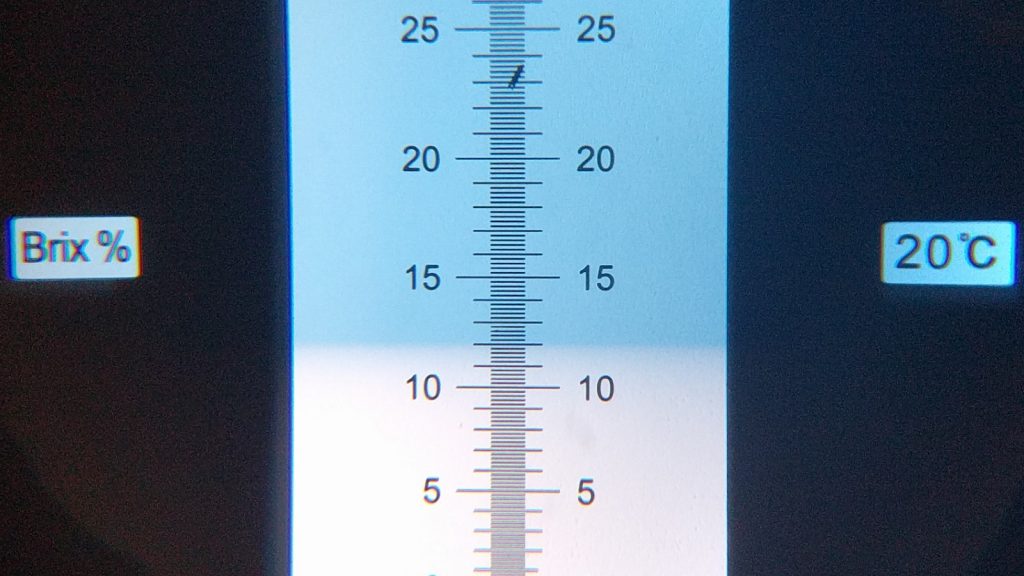
I racked the wort to a 3 gallon Better Bottle then placed it in my cool chamber to finish chilling to my target pitching temperature. Once at 64°F/18°C, I pitched my starter of Wyeast 1056 and set the chamber to maintain my desired fermentation temperature of 66°F/19°C. With signs of active fermentation basically absent after a week, I took a hydrometer measurement that showed the beer had reached the expected FG.
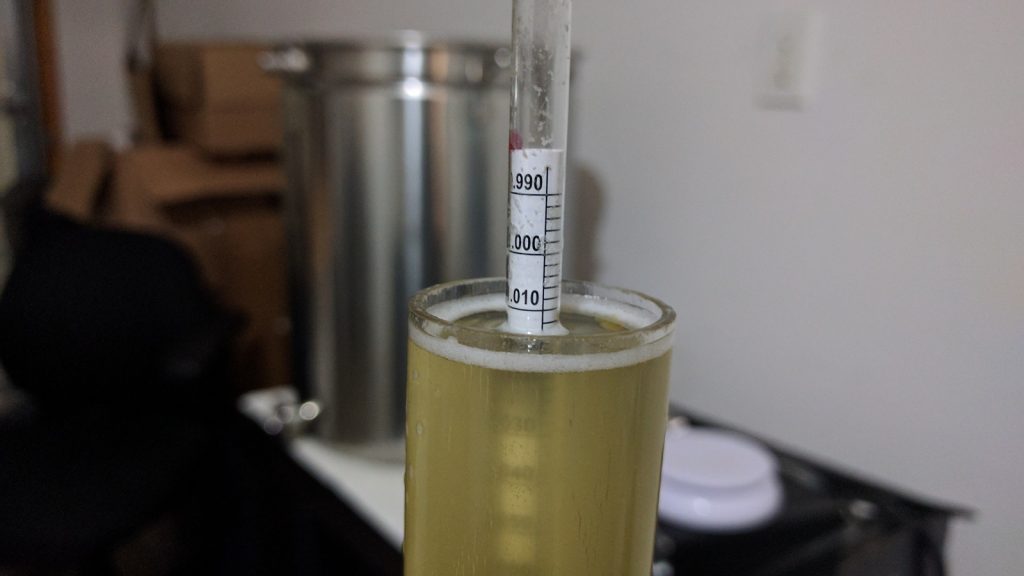
I added the dry hops and let them sit for 48 hours before cold crashing, fining with gelatin, and kegging. I burst carbonated overnight then reduced the CO2 to serving pressure where it sat for a few more days before I began serving it to participants.
| METHOD |
Participants were instructed to focus only on the aromatic qualities of the beer before evaluating the flavor. For each aroma and flavor descriptor, tasters were asked to write-in the perceived strength of that particular characteristic on a 0-9 scale where a rating of 0 meant they did not perceive the character at all and a rating of 9 meant the character was extremely strong. Once the data was collected, the average rating of each aroma and flavor descriptor was compiled and analyzed.
| RESULTS |
A total of 18 people participated in the evaluation of this beer, all blind to the hop variety used until after they completed the survey. The average aroma and flavor ratings for each descriptor were plotted on a radar graph.
Average Ratings of Aroma and Flavor Perceptions
The 3 characteristics endorsed as being most prominent by participants:
| Aroma | Flavor |
| Floral | Floral |
| Spicy/Herbal | Spicy/Herbal |
| Earthy/Woody | Earthy/Woody |
The 3 characteristics endorsed as being least prominent by participants:
| Aroma | Flavor |
| Apple/Pear | Dank/Catty |
| Melon | Melon |
| Resinous | Apple/Pear |
Participants were asked to rate the pungency of the hop character.
They were then instructed to identify beer styles they thought the hop would work well in.
Finally, tasters were asked to rate how much they enjoyed the hop character on a 0 to 10 scale.
My Impressions: I was pleasantly surprised by Willamette and sort of wish I had done something other than a grist of 100% Pilsner malt. I did get the floral notes, but the beer was a bit spicier than I expected with the earthy character seeming more subdued than I’d expected based on the comparison to Fuggles. To my tastes, Willamette comes across as pretty mellow, not nearly as pungent as most modern varieties, and I think it would do really well as a late addition in a darker English style. I perceived the bitterness as being fairly clean and even though it didn’t “pop” in the way some hops do, I definitely see the appeal.
| CONCLUSION |
It’s easy to see why Willamette was one of the most widely grown and used varieties in the US for so long– its a clean, mellow hop that doesn’t hang heavy on the palate. Perhaps as a function of the amount used and hopping schedule, especially the relatively large dry hop, I did pick up a bit more spicy character than I expected, which I have to believe would be toned down by less aggressive usage. While Willamette isn’t a new variety overall, it’s certainly a new one in my repertoire, one that I’ll be considering when designing future batches of Stout, Porter, and English styles where I desire more floral, earthy, and spicy hop character.
If you have any thoughts on or experiences with Willamette hops, please feel free to share them in the comments section below!
Support for The Hop Chronicles came from Yakima Valley Hops, suppliers of over 40 varieties of hops ranging from classics like Saaz and Cascade to yet-to-be-named experimental options. Offering great prices with reasonable shipping, consider Yakima Valley Hops for your next hop purchase.
Support Brülosophy In Style!
All designs are available in various colors and sizes on Amazon!
Follow Brülosophy on:
FACEBOOK | TWITTER | INSTAGRAM
If you enjoy this stuff and feel compelled to support Brulosophy.com, please check out the Support Us page for details on how you can very easily do so. Thanks!


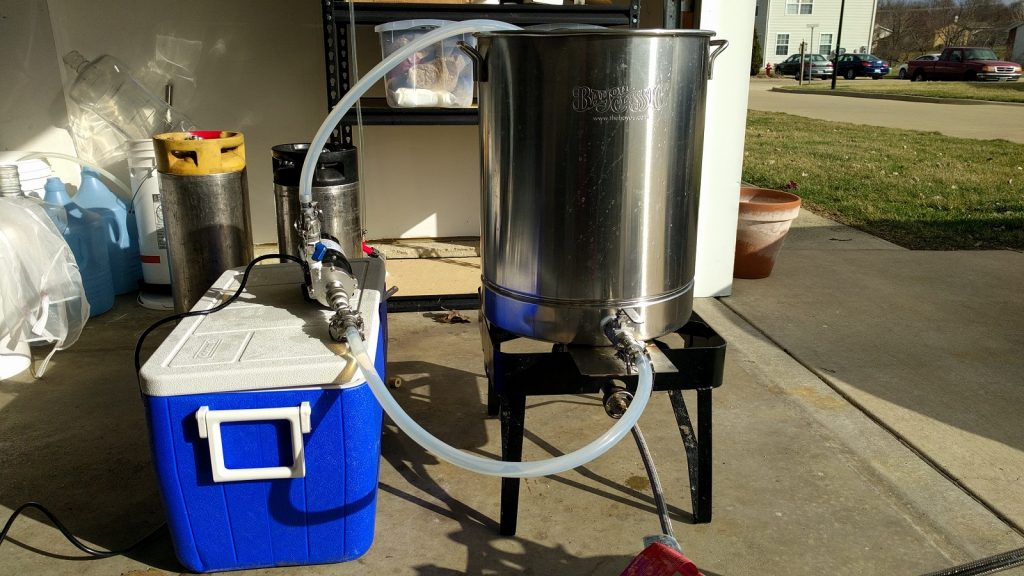
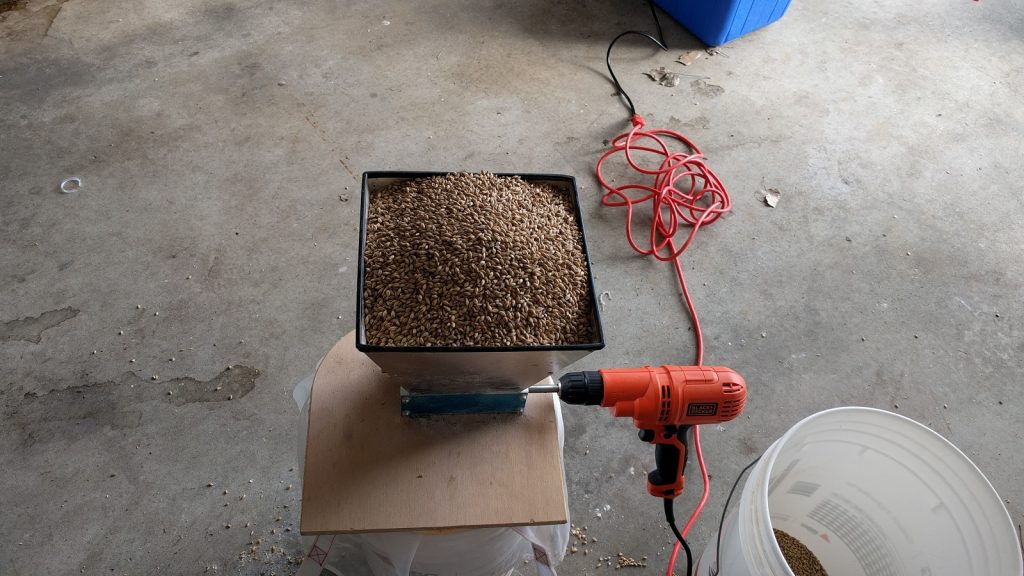
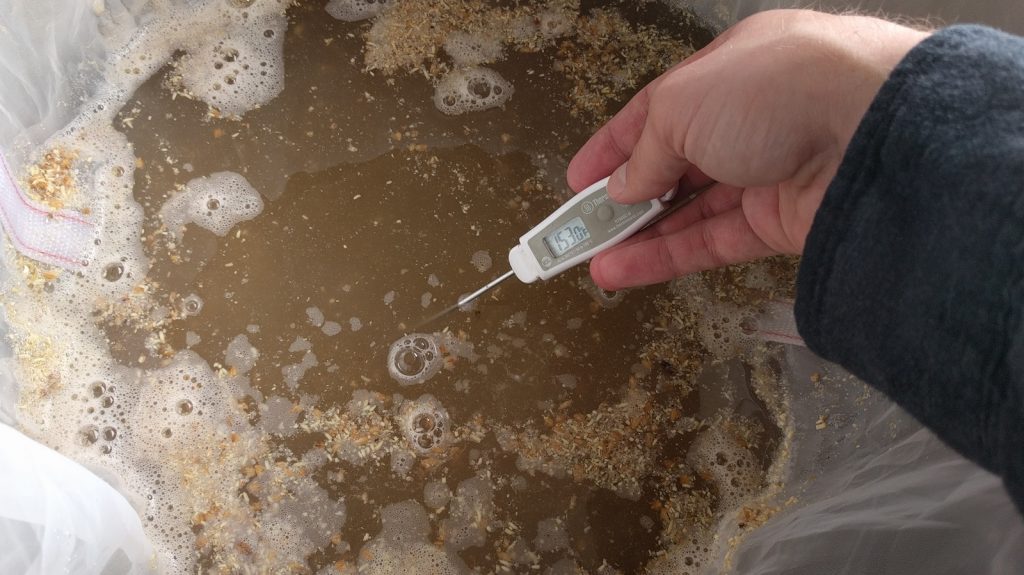
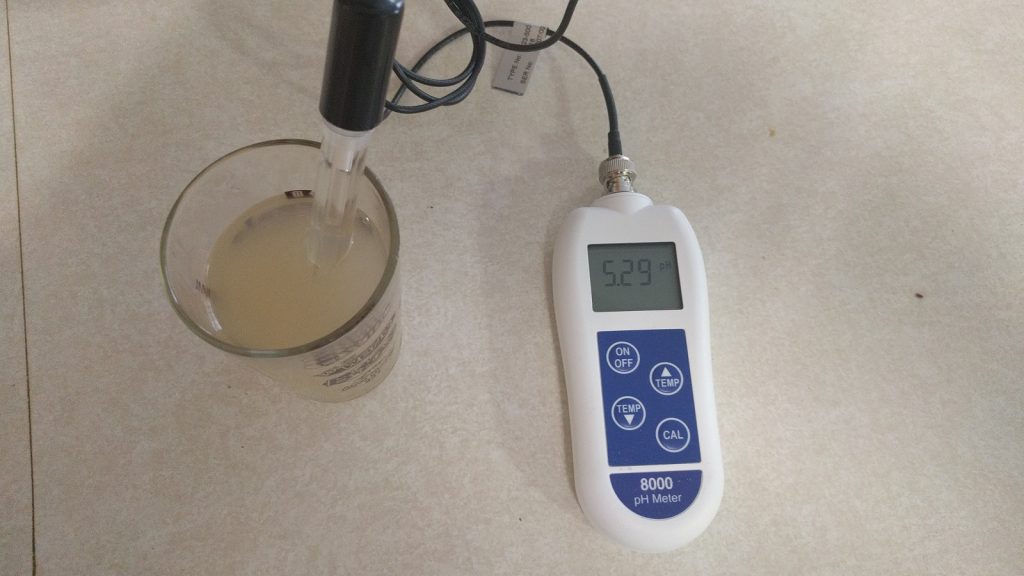
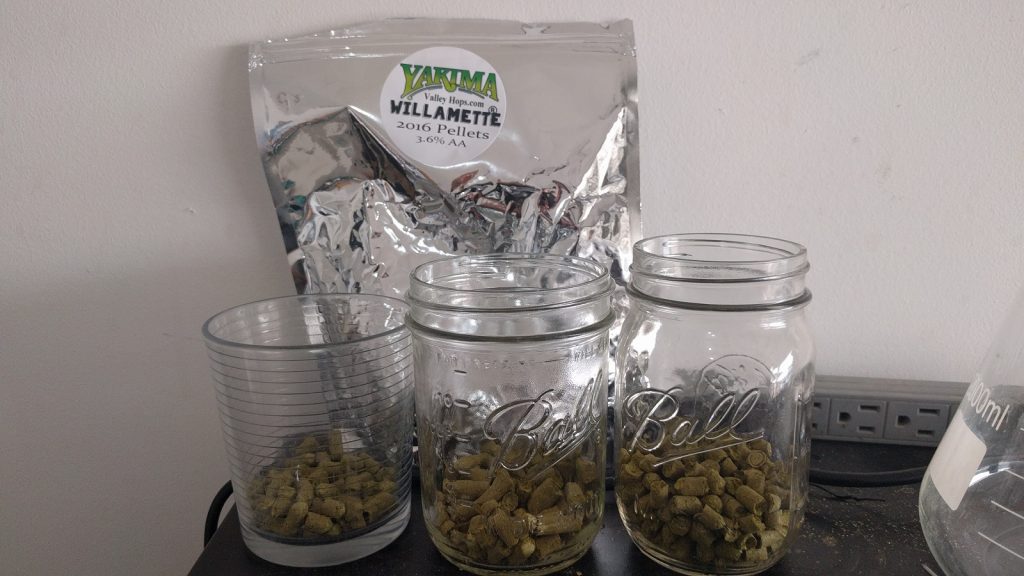
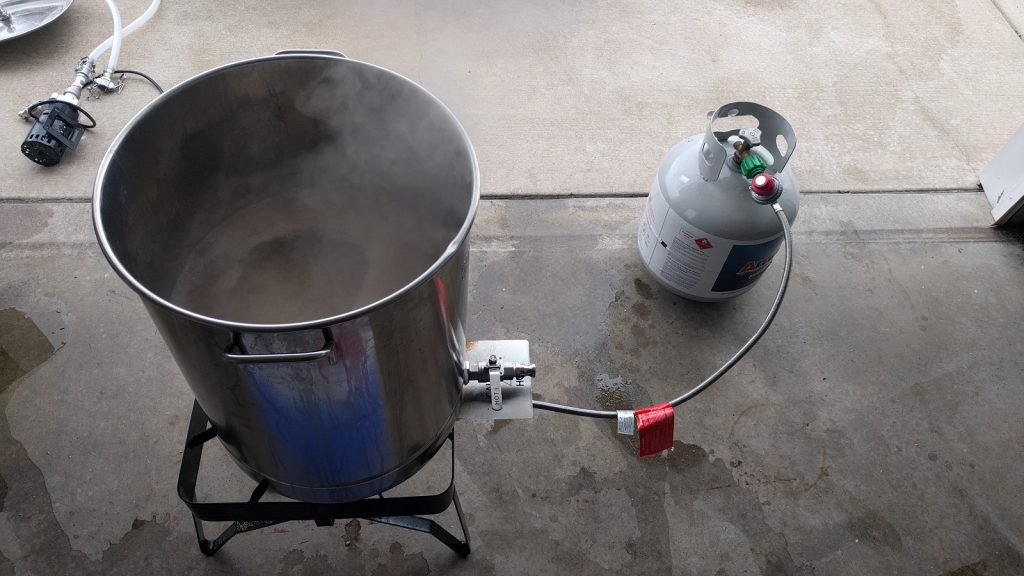
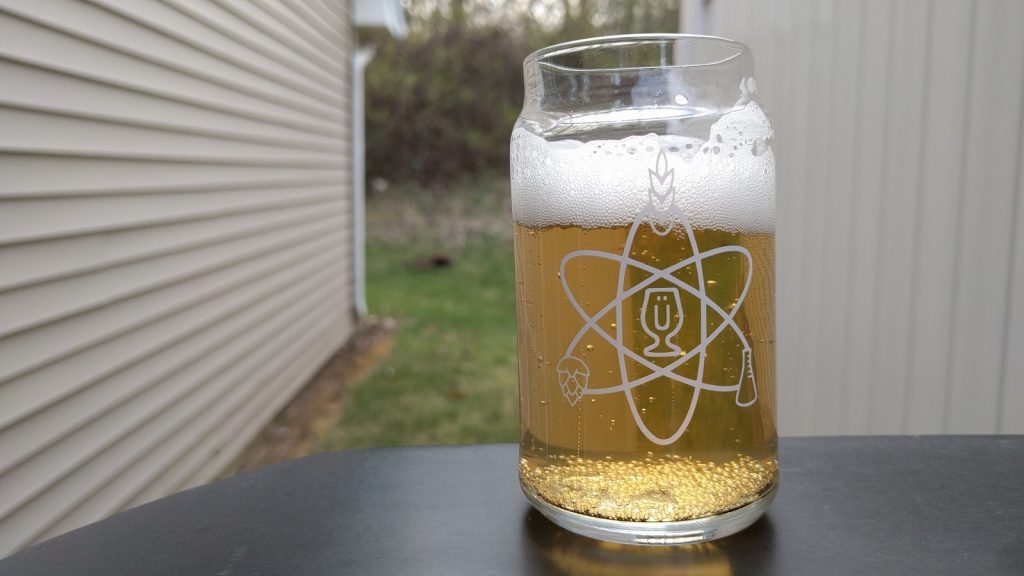
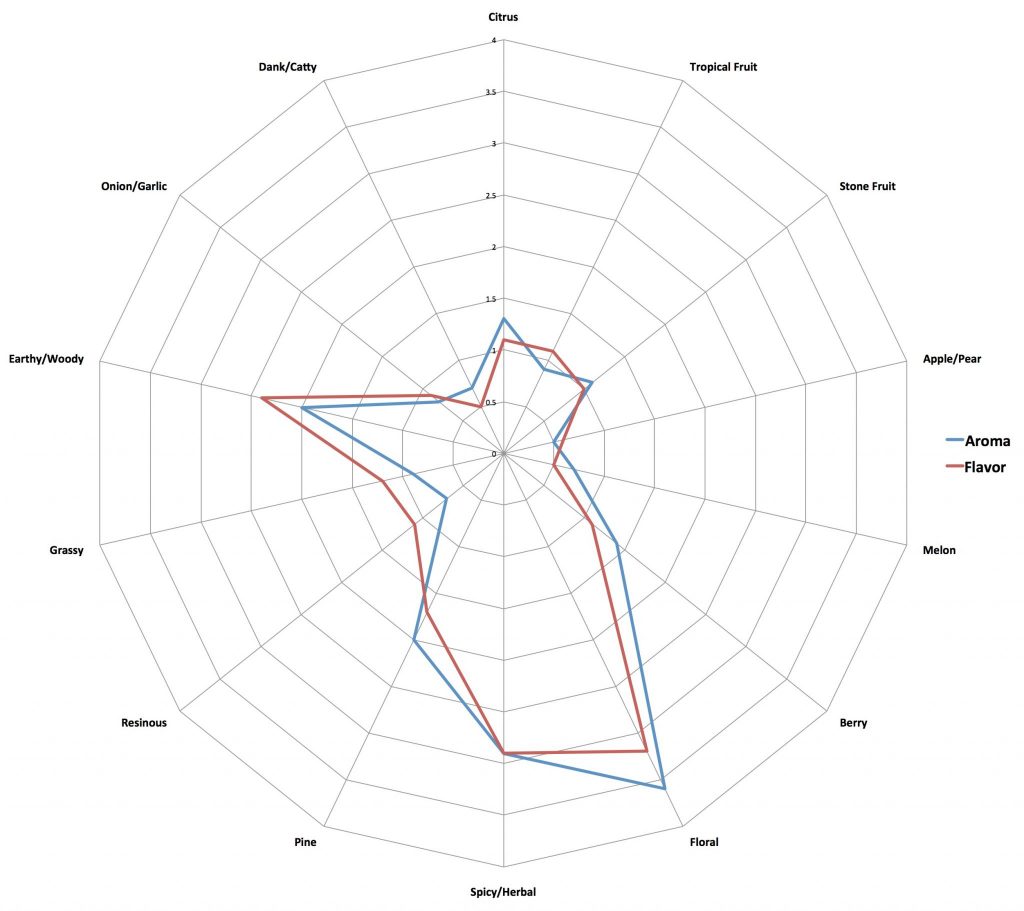
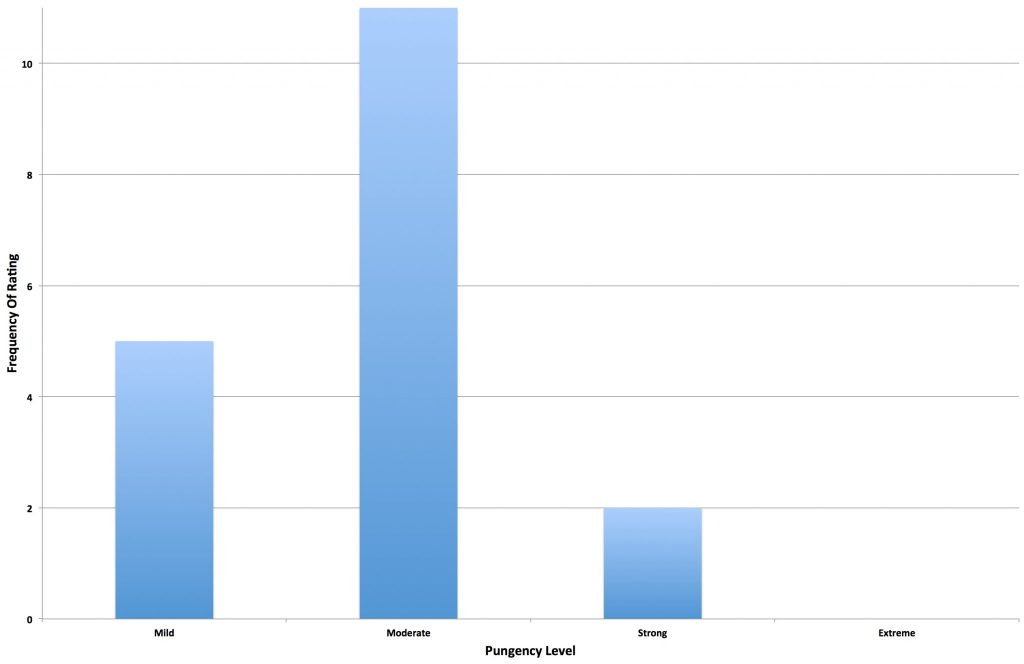
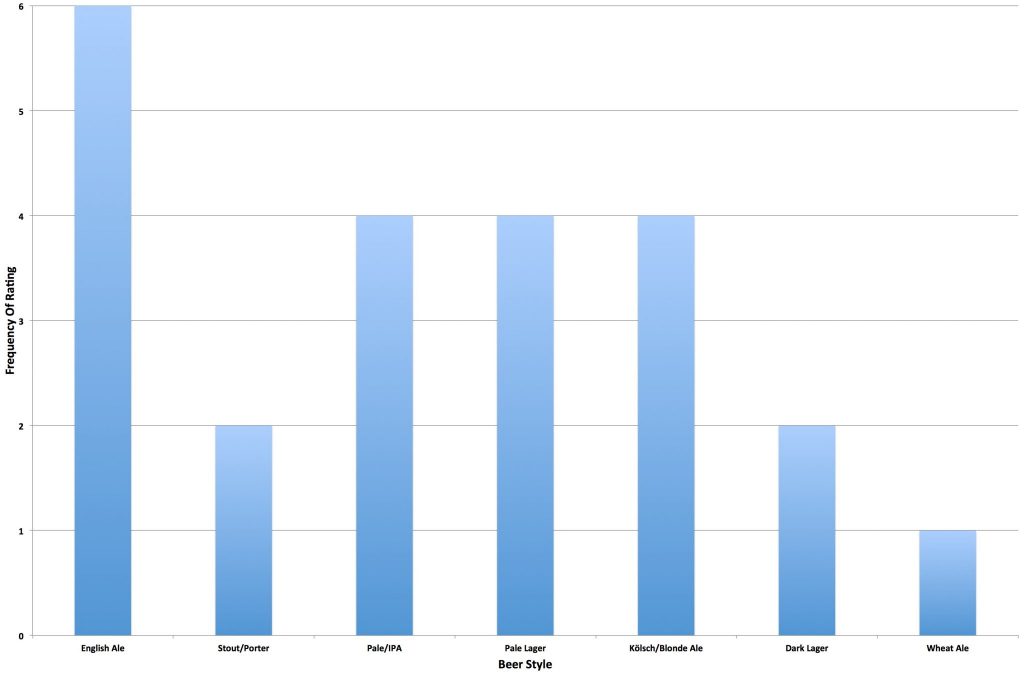
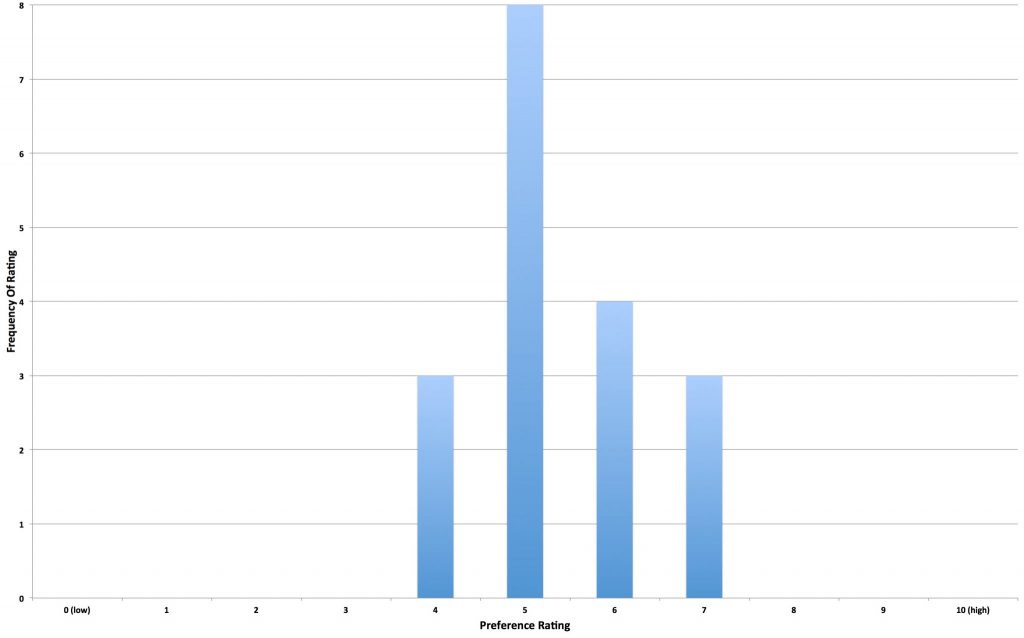











22 thoughts on “The Hop Chronicles | Willamette (2016) Pale Ale”
Thanx again for this Hop Chronicle, really enjoyed it.
I often used this hop for Stouts(especially RIS – I like the blend with Columbus) and for California common (i like the blend between this one and northern brewer)
I usually don’t get much spicy notes but i do get more the woody and elderberry notes that mixes well with some crystal or caramel malts.
Cheers from Uruguay.
Do you think changing out the pilsner for something like Maris Otter or Golden Promise would make a tasty beverage? I’m always looking for easy, light beers to have on tap.
Hey Chris! Yeah, I absolutely think that would be delicious. I would personally go with MO or a Pale Ale malt. Really mellow as a hop, smooth. Might go really well in a blonde?
Nice write-up. Willamette is one of my go to hops. I use it for late additions and also use it in several of my beers that just need a small boil addition to balance the malt.
Great information Matt, how would you compare it to Chinook? Also, what did you do with the other 2 gallons or wort?
Hey David, thanks! So I split the batch evenly between two 3 gallon better bottle, each had roughly 2.75 gallons of wort. Upcoming xbmt! One I’m pretty excited about.
Hey Matt, great to see someone from the area, I’m over in Peoria! You’re setup looks pretty similar to mine, with the exception of the pump during the mash. Any particular reason why you use this? I have noticed some temperature stratification when I mash, but I’ve typically just stirred every 10 minutes. Burner comes on the 30 minute mark to bring things back up to temp. From what I’ve seen and read, I don’t really think mash temperature makes as much of a difference as people seem to indicate.
Dude! That’s so close, come to an ABNormal Homebrew meeting sometime! I do a lot of xbmts there!
Agree with you, I don’t think mash temp matters as much (or at least, in as small intervals) as we are led to believe, but for the sake of the xbmts I try to keep everything as measurable and consistent as possible. So the pump helps with that. Mostly I got it because I wanted to experiment with low oxygen stuff, and for my set up that meant the pump and the mash cap.
Where can I learn more about the AbNormal Homebrew club? I’m in Bloomington and would love to check it out sometime. I found a facebook page, but it looks like it hasn’t been updated in a couple years.
Hey dude! We actually just met tonight, which is crazy. Our facebook page should be regularly updated actually, and I usually bring xbmts! Message me on FB, or just come to the meetings we are the second Monday of every month at Fat Jacks in downtown Bloomington.
I use Willamette in my ESB recipe. I have also used Pilgrim and the two of them mixed together. All versions have come out very tasty. In the past I have keg/dry hopped with Willamette in the keg to boost hop flavor after about half the keg is kicked. I usually prefer the 2 half of the keg.
Great write up! I’m curious about the RO water and getting to know water chemistry better. I bought a pH meter but dont know how verify the dissolved solids. Is this why you use RO water?
Thanks Chris!
So to verify dissolved solids, you’ll need a TDS (Total Dissolved Solids) meter. You can find them on Amazon, they’re incredibly cheap. I actually use one when testing new RO sources (I usually buy from the store) to make sure the mineral content is actually low.
I use RO water because my tap water (Normal, Illinois) is good for brewing typically (both breweries in town use it, but do some charcoal filtering)but it fluctuates throughout the year. I really aim for consistency, and it’s easier for me to start with nothing and build up then it is to keep a tab on the local profile, AND filter (because, as those two breweries would tell you, it needs filtering).
I’ve used willamete in a Porter and a Dark Beer made of whatever malt I had at the time. Both had a Very pleasant flavor and aroma. Good job Matt!
Mate what’s the reason you recirculate your BIAB mash do you find it gives you better efficiency? Do you get much of a temperature drop from running the wort through the pump over 60minute mash? I BIAB Brew and have been wondering if it’s worth it.
You know, I really didn’t see much of an efficiency spike when I started recirculating. I was already stirring every fifteen minutes or so during the mash, so I usually end up with good efficiency. Main reason I was recirculating was because I direct fire that kettle, and I didn’t want to get pockets of heat beneath the grain and false bottom. I really don’t think the recirculation is necessary, and I definitely lost about three degrees over the course of an hour if I wasn’t monitoring it and regulating appropriately. If your efficiency is alright, and you aren’t direct firing, I would say not worth it.
Well there is an exbeerment if there hasn’t already been one does stirring the mash constantly yield a better mash efficiency than not stirring so often like once or twice throughout the mash?
Matt, buddy. “Its” versus “it’s.”
Caught one and changed it!
Willamette is my go to for many english and belgian styles that would normally call for fuggles or styrian goldings. Porters, stouts, browns, tripels, quads, etc…. I like the idea of using an american hop that gives you a similar character as its using a more local regional ingredient, which would be more traditional since importing hops from across the ocean wouldnt have worked 100-200 years ago
There was a pretty healthy hop trade in the 19th century – the UK imported maybe a third of its hops in the late 19th century, whilst exporting a few hundred tons. Things like Willamette turn up pretty regularly in some of the British brewery recipes of 150 years ago.
I get that THC are sponsored by Yakima which may constrain things a little bit, but suggestions for some British THCs – EKG (or even EKG vs Hereford Goldings? The 2016 vintage was particularly bad for EKG, which would make for more of a difference), UK versus US Cascade (big difference in terpene profiles, shows up the terroir difference, think I’ve also seen Aussie Cascade recently as well). Stock’s Farm have some of the new ones for sale – I’ve got my eye on Endeavour and GP75, but might wait for the new harvest to catch them at their best. Having been blown away by green/wet hop Challenger last year, I’m also going to wait for the new harvest to do a heavily dry-hopped Challenger SMaSH – hopefully the current Yakima-like weather will persist and really boost the aromatics in the 2017 vintage.
Another one that is relatively new is Flyer, one of the last “true” Wye hops, described as “citrus hop with aromas of stoned fruits, liquorice, treacle-toffee and caramel with slight burnt notes” – I had a SMaSH mild with it which I really liked, and rather fancy using it in a heavily late/dry-hopped brown bitter.
This thread is a bit aged, but I’ll enquirer anyway,..
I have have an all Willimette Blond (2 row & Crystal 15) that I want to dry hop. This was a double batch with a 10 gal yield and first keg tasted like it needed something more. I boiled with 1 oz of Willimette, wanting to originally keep it small, but with the second keg I want to punch it up a bit (ok, a lot!).
Are there any suggestions regarding dry hopping with either Chinook, Citra, Cascade, Simcoe, or Centennial? Quanties, days?
Any assistance it greatly appreciated!